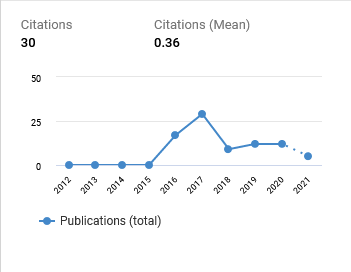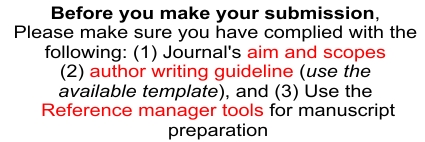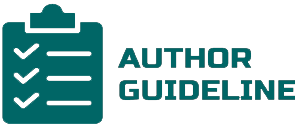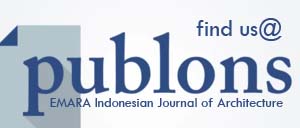Post Landslides Recovery: Resilience of Community and Local Construction
DOI:
https://doi.org/10.29080/eija.v8i1.1470Abstract
Post-disaster recovery of landslides is a big challenge when the available resources are limited. Recovery includes the phases of rehabilitation and reconstruction. It was based on the guidelines of BNPB (National Disaster Management Authority) in Indonesia. This case-study research analyzed the resilience principle for post-disaster recovery. The locus was at Selili Hill, an urban village in Samarinda, East Kalimantan (Indonesia), with several landslides (land creeping) events over the last twenty years. The community and local construction discuss the resilience principle. This study found that the contribution of community resilience and local construction has a significant role to play in the housing recovery. Community involvement was very active during a disaster. They worked with the local government to provide food supplies and emergency shelter to those in need. As a result, the house rehabilitation was quite successful, focusing on social (income) and physical condition. We hope that the post-disaster rehabilitation concept and demonstration will be durable until the local government relocates the settlement.
Downloads
References
Aldrich, D., & Meyer, M. (2014). Social Capital and Community Resilience. American Behavioral Scientist. , 254-269. DOI: https://doi.org/10.1177/0002764214550299
BNPB. (2020). Data Informasi Bencana Indonesia. Jakarta: BNPB.
Dixson, B. (2016). Sustainable Rebuilding Post Disaster. TEDx Talks.
Escamilla, E. Z., & Habert, G. (2015). Global or local construction materials for post-disaster reconstruction? Sustainability assessment of twenty post-disaster shelter designs. Building and Environment (Elsevier), 692-702. DOI: https://doi.org/10.1016/j.buildenv.2015.05.036
Gautam, D., Prajapati, J., Paterno, K. V., Bhetwal, K. K., & Neupane, P. (2016). Disaster resilient vernacular housing technology in Nepal. Geoenvironmental Disasters, 1-14. DOI: https://doi.org/10.1186/s40677-016-0036-y
Hidayati, Z., & Noviana, M. (2018). Non-structural measures for landslide (creeping type) in Selili Hill Samarinda. AIP Conference Proceedings, (pp. 1-10). Surakarta.
Murtagh, N., Scott, L., & Fan, J. (2020). Sustainable and resilient construction: Current status and future challenges. Journal of Cleaner Production .
NBRO. (2015). Hazard Resilient Housing Construction Manual. Colombo: NBRO.
Nurdini, A., Yovita, W., & Negri, P. (2017). Resiliency and affordability of housing design, Kampong Cieunteung-Bale Endah in Bandung Regency as a case study. IOP Conference Series: Earth and Environmental Science, Volume 99, International Conference on Sustainability in Architectural Design and Urbanism 2017. Semarang: IOP Publishing Ltd. DOI: https://doi.org/10.1088/1755-1315/99/1/012013
Peek, L. (2016). Retrieved January 2021, 1, from http://www.sesync.org/events-announcements/wed-2015-12-16-1018/immersion-lecture-risk-vulnerability-resilience
Resilient_Design_Institute. (2020). Resilient Design Institute. Retrieved November 1, 2020, from Resilient Design Institute: https://www.resilientdesign.org/the-resilient-design-principles/
Sutley, E. J., Lindt, J. W., & Peek, L. (2017). Multihazard Analysis: Integrated Engineering and Social Science Approach. ournal of Structural Engineering. DOI: https://doi.org/10.1061/(ASCE)ST.1943-541X.0001846
The_University_of_Osmania. (2018). Capacity Building Rehabilitation measures and long-term reconstruction. Retrieved December 2020, 1, from https://www.youtube.com/watch?v=9EWZvwE2548.
Tohari, A., & Soebowo, E. (2007, February 2007). LIPI. Retrieved October 1, 2020, from LIPI: http://lipi.go.id/berita/mengenali-dan-memitigasi-bahaya-gerakan-tanah-rayapan-:-kerawanan-cadas-pangeran/476.
UNISDR. (2009). UNISDR terminology on disaster risk reduction. Geneva: United Nation.
UNISDR. (2013, September 21). Retrieved September 21, 2020, from https://www.slideshare.net/rizwan81/drr-basic-concepts-and-terminologies-of-disaster-risk-reduction-drr.
World_Bank_Group. (2015). Nepal - Earthquake Housing Reconstruction Project (English). The World Bank.
Zulfadrim, Z., Toyoda, Y., & Kanegae, H. (2019). The Integration of Indigenous Knowledge for Disaster Risk Reduction Practices through Scientific Knowledge: Cases from Mentawai Islands, Indonesia. International Journal of Disaster Management, 1-12.

Downloads
Additional Files
Published
How to Cite
Issue
Section
Categories
License
Copyright (c) 2023 ZAKIAH HIDAYATI

This work is licensed under a Creative Commons Attribution-ShareAlike 4.0 International License.
- Authors retain copyright and grant the journal right of first publication with the work simultaneously licensed under a Creative Commons Attribution ShareAlike License that allows others to share the work with an acknowledgment of the work's authorship and initial publication in this journal.
- Authors are able to enter into separate, additional contractual arrangements for the non-exclusive distribution of the journal's published version of the work (e.g., post it to an institutional repository or publish it in a book), with an acknowledgment of its initial publication in this journal.
- Authors are permitted and encouraged to post their work online (e.g., in institutional repositories, pre-print sites, or on their website) prior to and during the submission process, as it can lead to productive exchanges, as well as earlier and greater dissemination of published work.
































